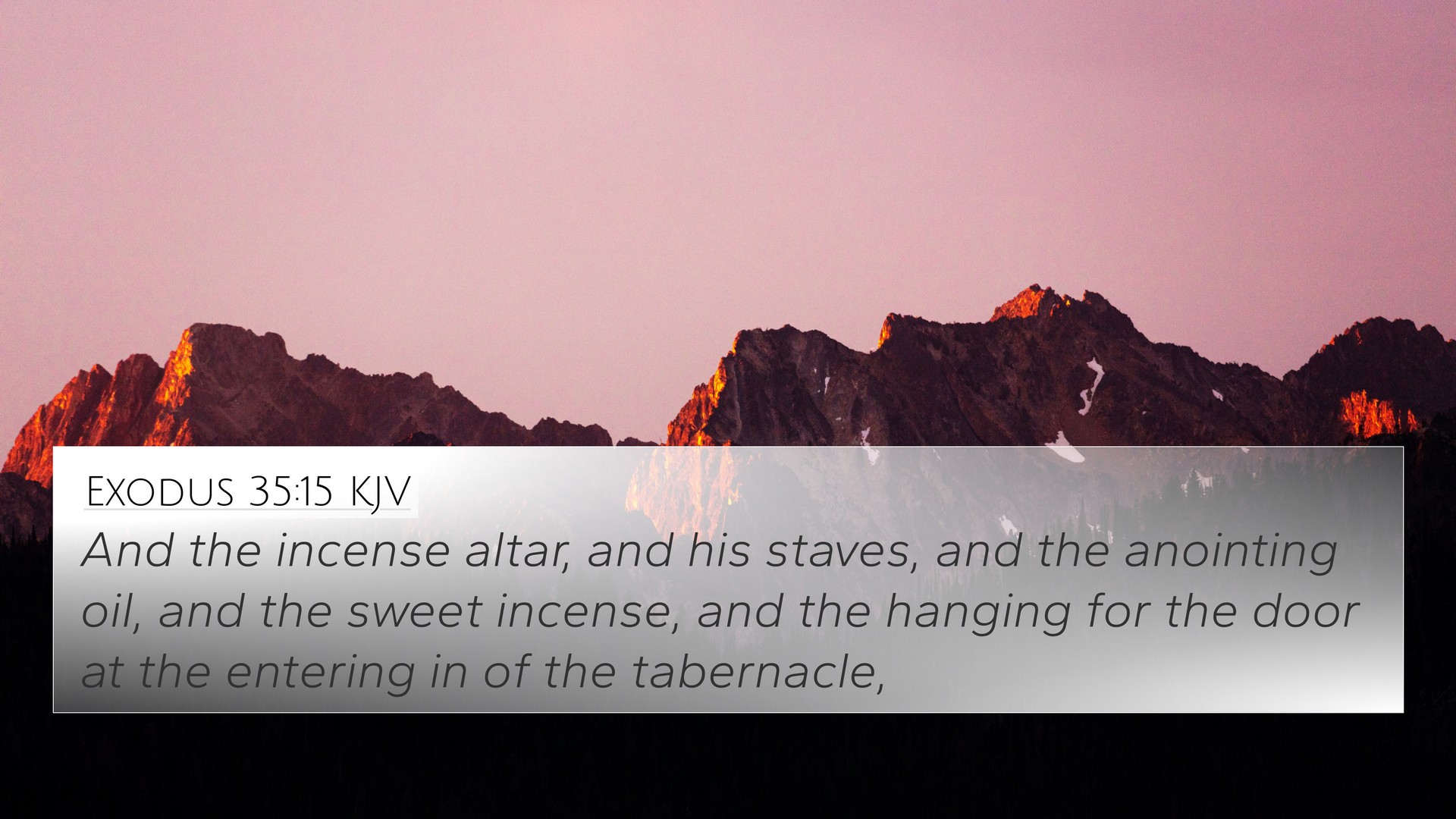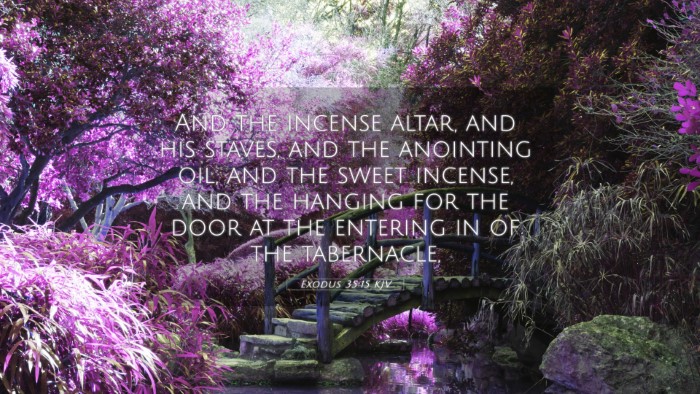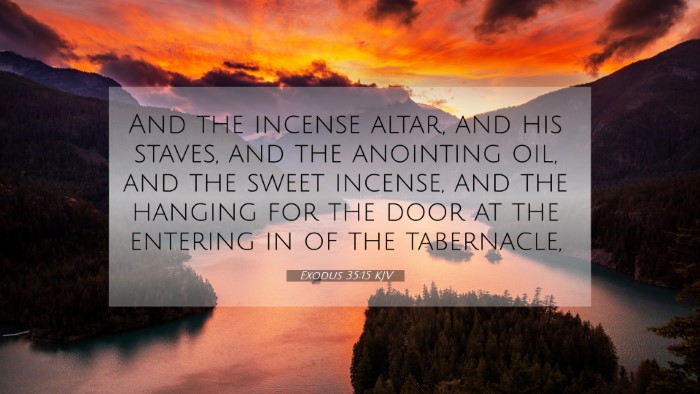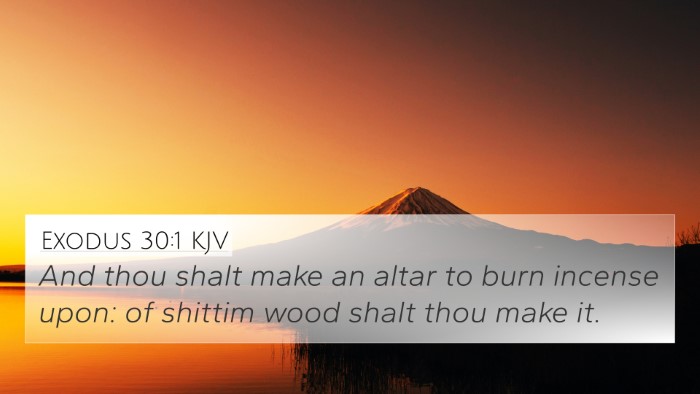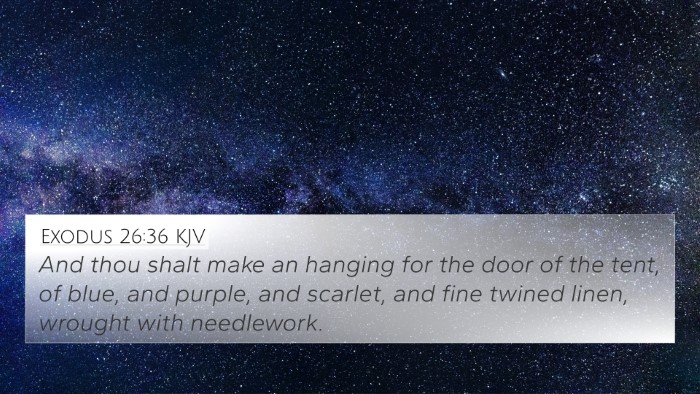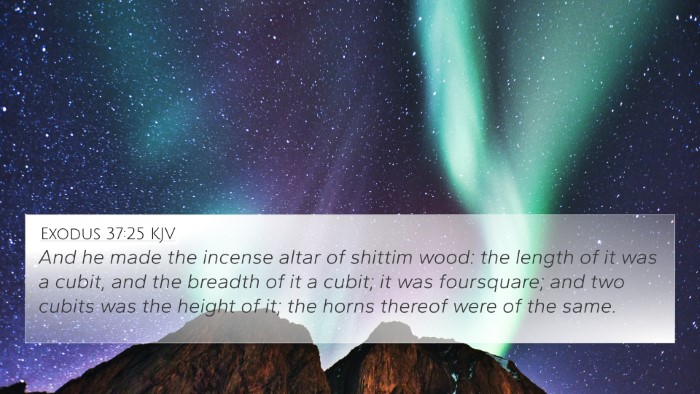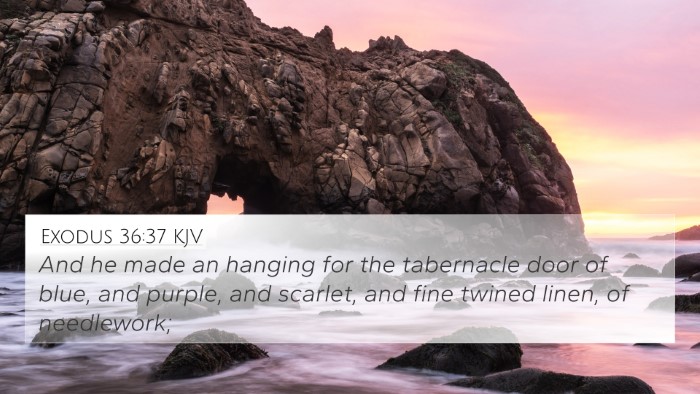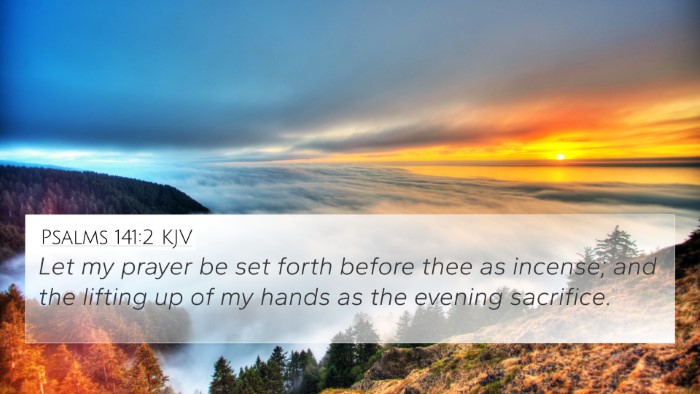Understanding Exodus 35:15
Exodus 35:15 presents a significant articulation of the arrangement and purpose of the elements involved in the Tabernacle's construction. The verse states: “The incense altar, and his staves, and the anointing oil, and the sweet incense for the holy place: the sweet incense for the holy place.”
Context of Exodus 35
The context of Exodus 35 is the detailed description of the construction of the Tabernacle, which served as a dwelling place for God among His people. This chapter encompasses the materials required, the artisans involved, and their duties. The emphasis on each item reflects its importance in the worship of God.
Verse Meaning and Insights
In this verse, we find specific references to the incense altar, an essential aspect of the sanctuary. The incense offered on this altar symbolizes prayer and intercession. Here, we will explore the meaning and implications of each element from Exodus 35:15 derived from reputable public domain commentaries:
-
Incense Altar:
The altar of incense signifies the prayers of the saints rising to God (Revelation 5:8). Matthew Henry notes that this altar stands as an emblem of true worship, showing that prayer must become as necessary to our spiritual life as incense was to the Tabernacle service.
-
His Staves:
The staves (or poles) were intended for transporting the altar (Exodus 27:6-7). Albert Barnes emphasizes that they symbolize the willingness to carry our offerings before God wherever He leads us.
-
Anointing Oil:
The anointing oil highlights the necessity of consecration and the Holy Spirit's presence within the sacred service. Adam Clarke explains that the use of oil represents God's favor and is essential for the sanctification of all sacred things.
-
Sweet Incense:
The sweet incense crafted for the holy place carries profound significance as it exemplifies the aroma of Christ (2 Corinthians 2:15). It represents the pleasing nature of worship that pleases God’s heart.
Related Bible Verses and Cross-References
This verse connects with several scriptures across both the Old and New Testaments, yielding deeper insights into its application and themes:
- Exodus 30:1-10 - Details about the incense altar and its sacrificial significance.
- Revelation 8:3-5 - Describes the prayers of the saints in the heavenly realm, enhancing the connection between worship now and eternally.
- Psalm 141:2 - Illustrates the relationship between prayer and incense “Let my prayer be set before thee as incense.”
- Hebrews 9:4 - Mentions the gold altar of incense, illustrating continuity between Old Testament worship and the New Covenant.
- 1 Thessalonians 5:17 - Emphasizes the importance of prayer, reflecting the ongoing relevance of the altar of incense in the believer's life.
- Colossians 3:17 - “Whatever ye do in word or deed, do all in the name of the Lord Jesus,” connecting with the idea of doing all things as a form of worship.
- Luke 1:10 - Where the people were praying outside at the hour of incense, showcasing the link between the Old Covenant practices and the New Testament emphasis on prayer.
Conclusion
The elements outlined in Exodus 35:15 are not merely historical artifacts but rich symbols of God's desire for His people to engage in heartfelt worship, prayer, and intimacy with Him. Through cross-referencing with other biblical texts, we can glean a comprehensive understanding of the significance of these elements in our spiritual lives today.
Exploring Biblical Connections
For those investigating how to find cross-references in the Bible or engaging in cross-reference Bible study, the themes in Exodus 35:15 serve as a powerful reminder of the continuity of God’s call to relationship and holiness throughout scripture. Tools for Bible cross-referencing, such as a Bible concordance or a cross-reference Bible study guide, can enhance your understanding and reveal thematic connections across different biblical narratives.
